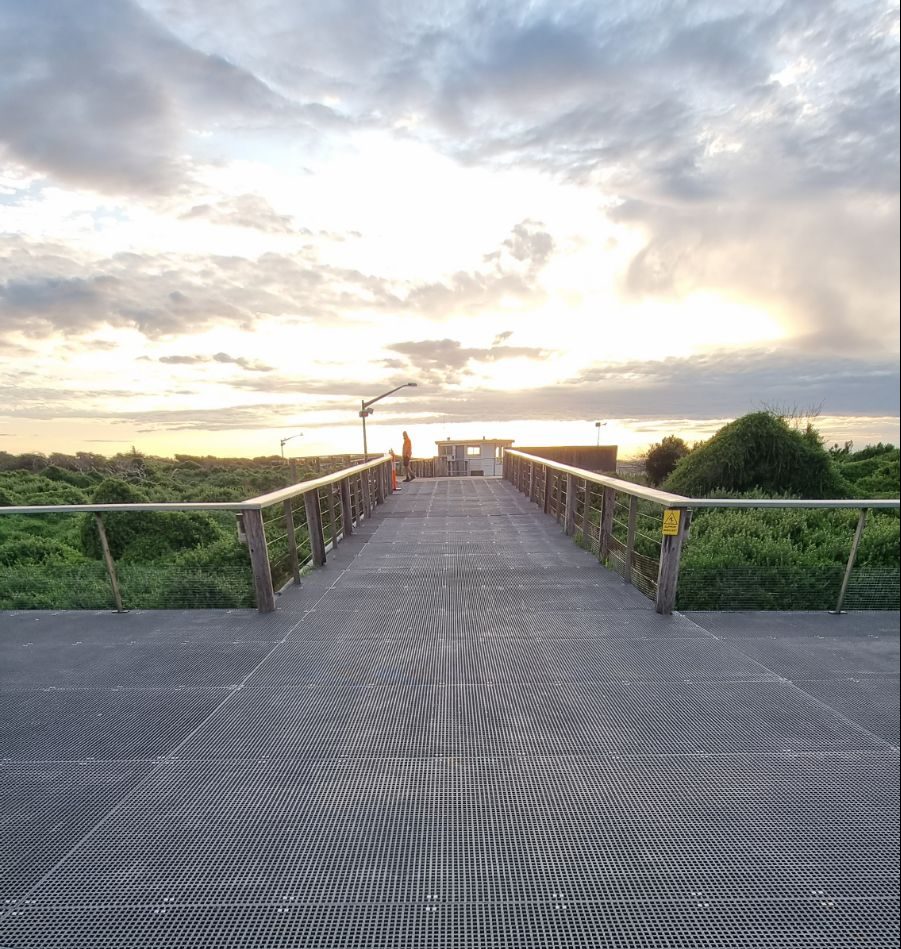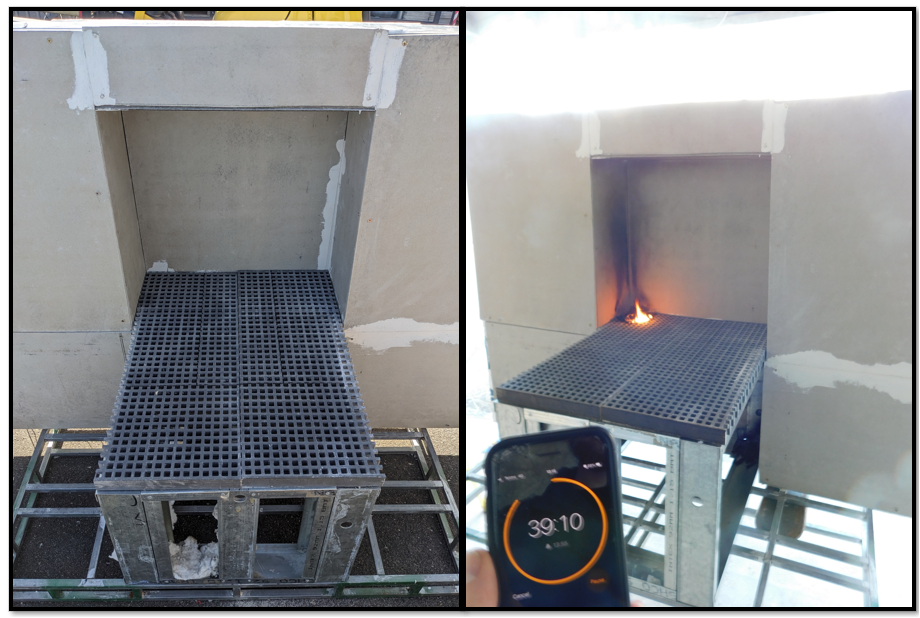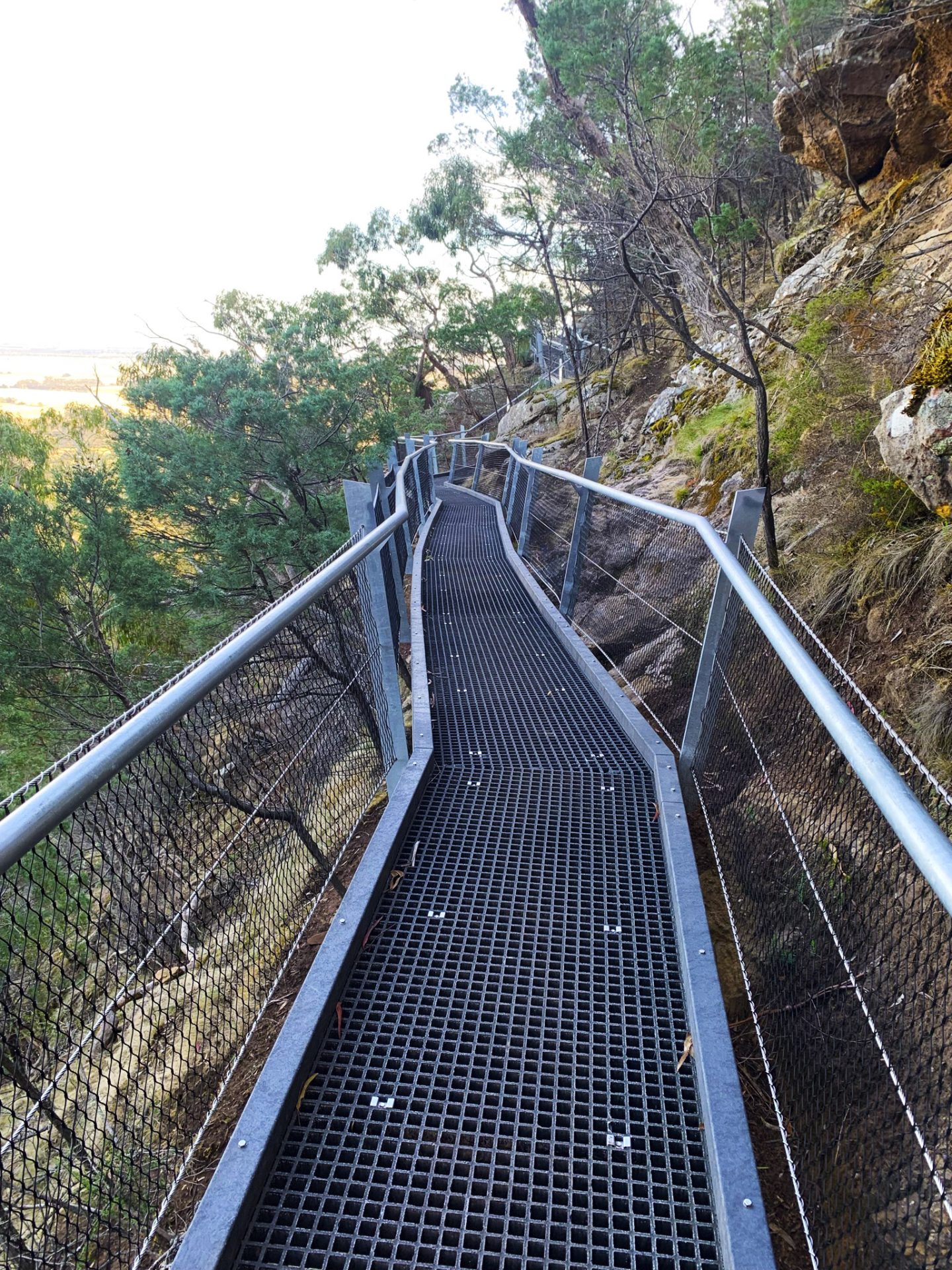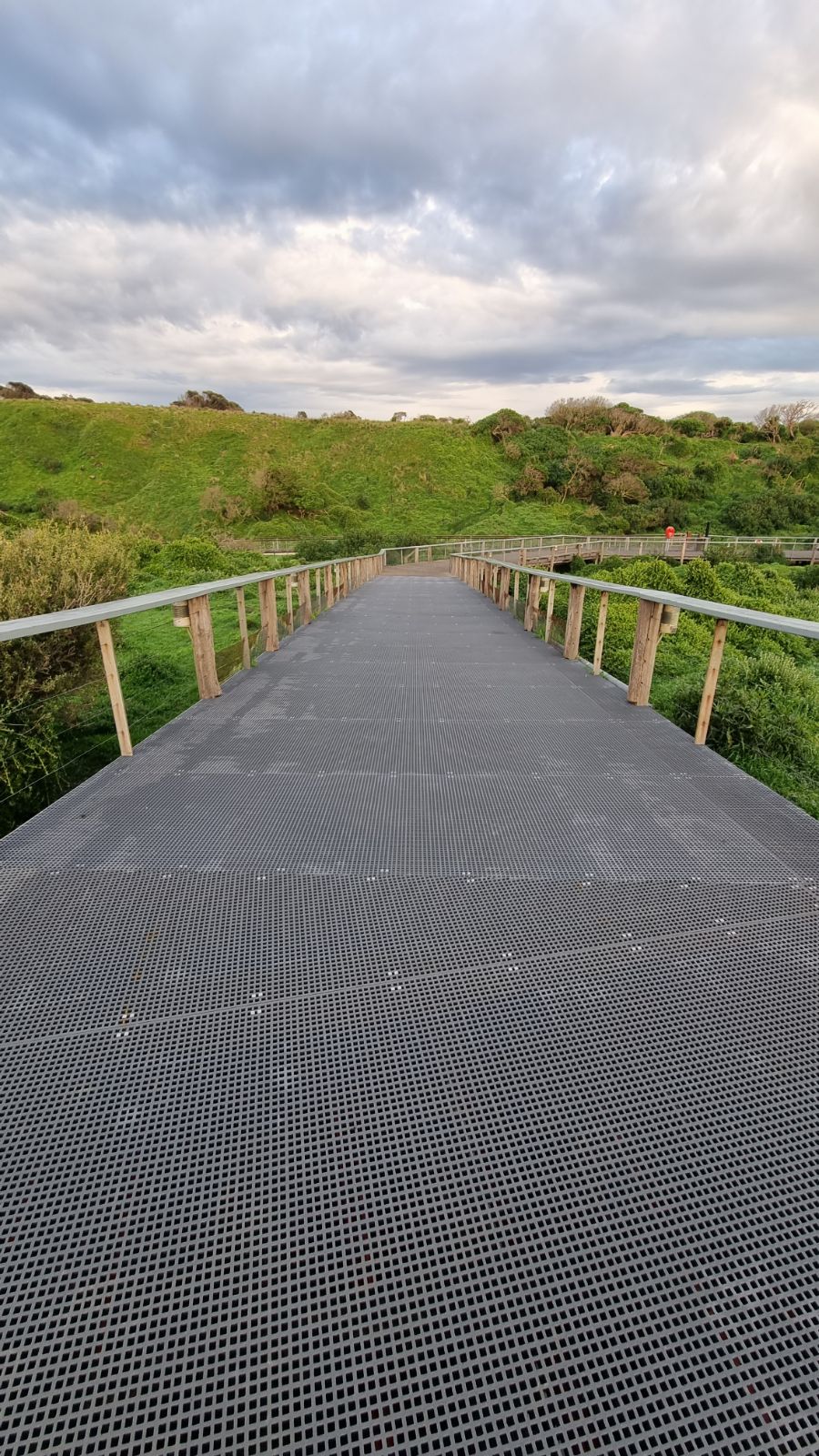There are unique challenges when building in the Australian environment, and the ever-present threat of bushfires is one of the most significant. As we’ve seen over the past few decades, bushfires are increasing in severity and frequency – and building requirements are becoming stricter in an effort to save lives.
Terra Firma Industries have recently completed Bushfire Attack Level (BAL) rating tests for their Moulded Mini-Mesh FRP grating. As a material that’s ideal for decking, walkways, boardwalks and viewing platforms, it’s crucial that this product achieves the highest bushfire safety certification possible. Read on to learn more about BAL testing and how Terra Firma’s Mini-Mesh performed.

Rigorous testing to meet safety standards
Bushfires are frightening and destructive forces of nature. Their unpredictable behaviour and ferocious heat often make them impossible to contain. Bushfires can also create a microclimate, generating wind and heat that further compounds their disastrous impacts. When bushfires reach a certain level of intensity, they can become firestorms with their storm clouds. Firestorms generate unpredictable and dangerous wind bursts, driving ember attacks and sudden changes in wind direction. These factors make fighting fires a monumental challenge. Using materials with a strong ability to withstand radiant heat and flames, in conjunction with building designs that limit fire spread and ember access points, are critical considerations for Aussie builders – and building approval now depends on the safety certification of materials and designs.
The BAL rating is the Australian standard for testing a material’s resistance to radiant heat, ember attack and direct flame contact. BAL testing measures the energy a fire creates and how resistant materials are in each range to gauge how they will respond in fire situations. There are several levels to the BAL test: 12.5, 19, 29 and 40 KW.
Terra Firma’s Moulded Mini-Mesh product successfully achieved the BAL 40 rating under laboratory conditions that mimic bushfire stresses.

How is BAL testing performed?
Testing is conducted in a NATA-accredited laboratory (the Australian Authority for Laboratory Testing Standards) and involves heat and flame tests on the chosen material.
First, A small crib of wood is placed next to or on the structure and set on fire. Then a heat panel is moved slowly toward the tested material until it reaches the highest measure (40KW). The wood crib continues to burn as the heat source approaches. This ensures heat and flame are applied to the product being tested. The testers then withdraw the panel and monitor whether the material is alight, if the flames subside in a defined period or the structure continues to burn. A key focus is whether the product maintains structural integrity – a crucial factor in determining whether a fire-affected structure will allow the fire to spread.
Terra Firma’s BAL 40 rating, means Moulded Mini-Mesh maintained structural integrity and withstood heat and direct flame exposure to the highest possible BAL standard.

What does this mean for customers?
New building surfaces facing bushland areas must meet stringent fire safety standards, even in semi-urban situations. Builders using Terra Firma Mini-Mesh for decking, ramps, viewing platforms, or walkways can now provide the required fire safety certificates to building inspectors.
The BAL 40 rating is a strong validation that Terra Firma Mini-Mesh is a material that’s fit for purpose and can be used confidently by schools, councils and homeowners.
Explore Terra Firma’s FRP Grating Products including their Moulded Mini Mesh FRP Grating.

Share this
Discover the Terra
Firma difference
Learn how we can help support your next project